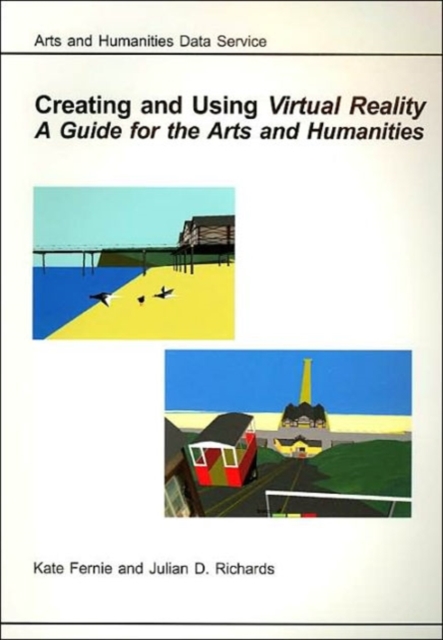
Creating and Using Virtual Reality : A Guide for the Arts and Humanities Paperback / softback
by Kate Fernie, K. Fernie, Julian Richards
Part of the Archaeology Data Service & Digital Antiquity Guides to Good Practice series
Paperback / softback
Description
The essence of virtual reality lies with computer-based three-dimensional environments.
Often termed 'worlds', these conceptual models can be navigated, interacted with and updated in real-time.
This Guide to Good Practice is intended for individuals and organisations who are interested in potential ways to use virtual reality within the arts and humanities.
It concentrates on the most widely used form of virtual reality today, desk-top virtual reality, which may be distributed and viewed on-line via the World Wide Web.
In these systems virtual reality worlds run on users' desk-top computers, are displayed on a standard monitor, and navigated using a mouse or 3-D space ball and keyboard.
This Guide introduces virtual reality by considering its history, philosophy and theory, and discusses good practice in planning virtual reality projects.
It presents the data management and documentation procedures required to enable models to be maintained, and enjoyed by the audiences for which they are intended.
It also explores strategies for archiving and considers how to avoid the loss of virtual reality models as technology changes.
A virtual library of case studies illustrates some applications of virtual reality in Archaeology, Architecture, Dance, Design, Fine Art, Heritage, History, Museum Studies and Theatre.
Examples of worlds which allow users to interact with each other are also presented.
Information
-
Available to Order - This title is available to order, with delivery expected within 2 weeks
- Format:Paperback / softback
- Pages:128 pages
- Publisher:Oxbow Books
- Publication Date:15/12/2003
- Category:
- ISBN:9781842170403
Information
-
Available to Order - This title is available to order, with delivery expected within 2 weeks
- Format:Paperback / softback
- Pages:128 pages
- Publisher:Oxbow Books
- Publication Date:15/12/2003
- Category:
- ISBN:9781842170403










